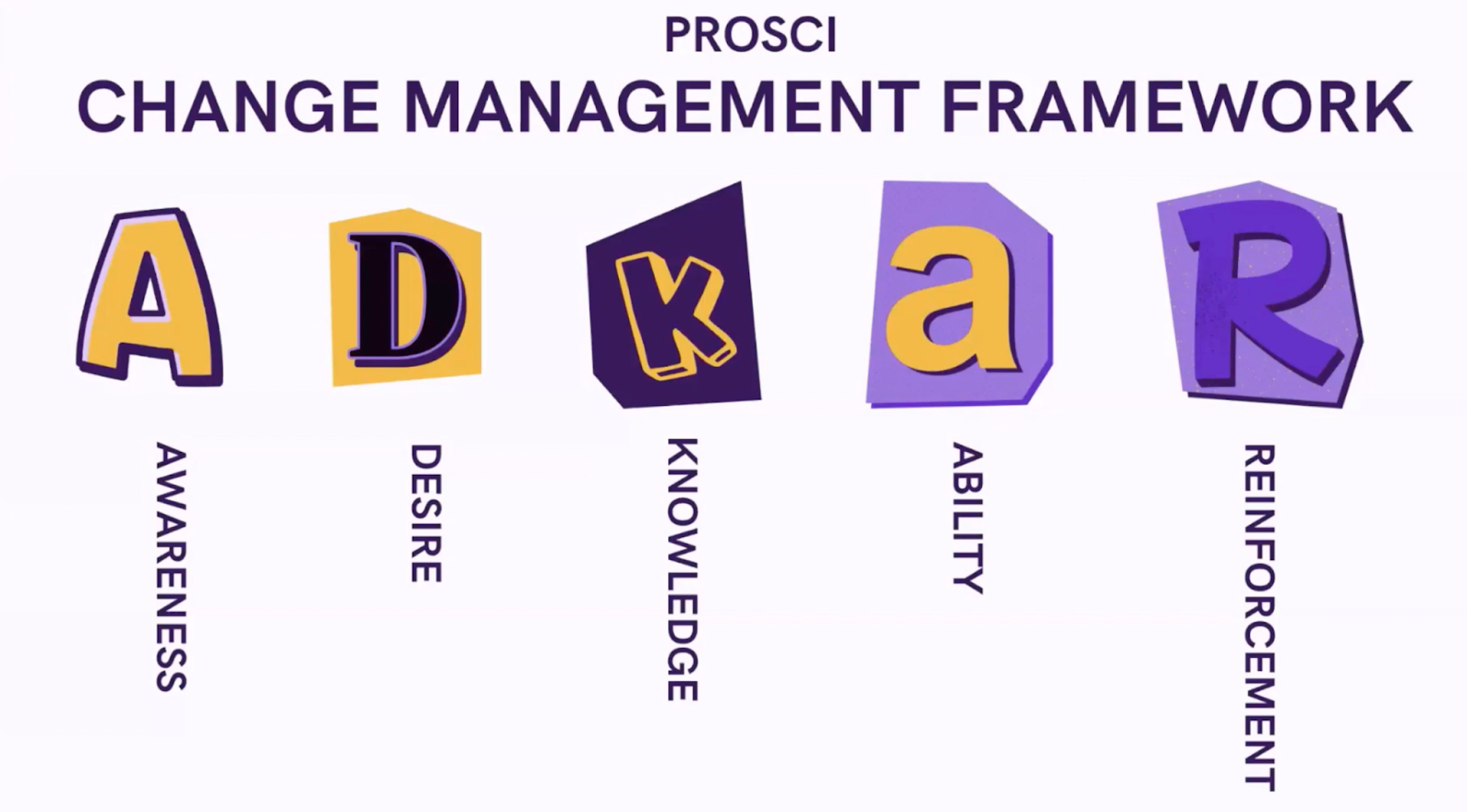[Webinar] Intentional Community Member Onboarding
_1200_600.png)
In community management and customer engagement, the proverb 'first impressions last' rings true, marking the important role of onboarding in shaping a member’s journey, perception, and ongoing interaction within a community. The essence of onboarding ranges from the traditional tactics of welcoming to a multifaceted strategy encompassing education, engagement, and sustained support.
The Bettermode team had the pleasure of hosting Jamie Langskov, Founder of Chaotic Good Consulting, in a recent webinar that delved deep into the nuances of crafting effective onboarding experiences that resonate, engage, and retain.
Jamie, a seasoned community leader, has expertise through diverse experiences, from leading community initiatives at renowned companies to mentoring and advising startups in and out of the community space. In an era where virtual communities have become critical for connection, learning, and engagement, Jamie's insights into onboarding provided a blend of strategic foresight and practical advice.
In this webinar, “Make a Lasting Impression with Intentional Community Member Onboarding,” Jamie shows a roadmap to crafting onboarding experiences that not only welcome but also sustain and enhance member engagement and participation.
The challenge of onboarding
Jamie initiated the discussion by drawing attention to the prevalent struggles in community building: the focus on low-hanging fruit during the launch phase and the perpetual postponing of what is deemed non-essential for Minimum Viable Product (MVP) launches.
The story usually unfolds with the promise of integrating necessary elements in the next iteration. Still, more often than not, those promises are eclipsed by other immediate concerns like bug fixes and tackling technical debt.
This delay often comes at the cost of member experience, especially in onboarding. Jamie highlighted this as a missed opportunity to shape a new member’s journey and establish a robust, supportive community culture.
Understanding context in onboarding
The crux of Jamie’s message revolved around the vital concept of context in onboarding. Understanding the context that a new member brings into the community can significantly influence the onboarding process and, ultimately, the member’s engagement and experience within the community.

According to Jamie, onboarding is not just a mere introduction but a fundamental tool to:
- Set and manage expectations about community behavior and norms.
- Establish and reinforce community culture.
- Develop psychologically safe spaces.
- Teach members how to engage effectively (e.g., searching before asking questions).
- Facilitate a sense of belonging.
- Reduce friction in both product and community adoption
Crafting the onboarding experience
Jamie emphasized that formulating an effective onboarding experience should be deeply rooted in understanding what new members need to succeed. It involves introspecting on crucial questions like why members are there, what their goals are, and how the community can facilitate achieving those goals.
That’s why onboarding becomes a roadmap, designed to guide new members to relevant places within the community, anticipate their needs and connect them with valuable resources and people.
This proactive approach not only elevates the member experience but also enhances the scalability and efficiency of the community management team by minimizing the need to navigate basic inquiries (such as password changes or finding learning resources).
Building trust and confidence
Jamie highlighted the importance of recognizing new members' divergent contexts, often shaped by their previous interactions and experiences with the product or brand. For instance, free-tier users and enterprise customers have vastly different needs, expectations, and knowledge bases.
Understanding this context, informed by the customer journey, is pivotal in crafting an onboarding experience that fills existing knowledge gaps and aligns with the member’s existing knowledge and experiences. It ensures that the onboarding process is not redundant, but rather, adds value by providing new, relevant, and needed information and resources.
Understanding and integrating the context into the onboarding experience is paramount in building trust and confidence from the outset. A member who feels seen, valued, and supported in their initial interactions with the community is more likely to engage actively and contribute to the community’s vibrancy and sustainability.
Communication preferences
Navigating through the multifaceted dimensions of communication, Jamie illuminated the criticality of identifying and respecting the communication preferences prevalent within a community. This isn’t merely about choosing the right platform but enveloping communications in a medium that resonates, engages, and is preferentially welcomed by the community members.
For instance, whether a company predominantly uses Slack, email, or Teams can provide insightful cues into the communication rhythms and preferences that are already embedded within the organizational culture.
Likewise, understanding the dominant communication channels within a community is imperative to ensure that messages are not only transmitted but also effectively received and engaged with.
Tailoring communication to community demographics
This becomes particularly pivotal when we delve into demographics.
Diving deeper, Jamie accentuated the necessity to tailor communication strategies to the specific demographics of a community. A developer-centric community, for example, may have communication preferences that starkly contrast with a marketing-focused community.
For instance, developers might prefer certain platforms, and ensuring that communications are tailored to these preferences enhances their receptivity and engagement.
That’s how the communication strategy morphs into a two-pronged approach, where the medium and the message are both crafted in alignment with the preferences and expectations of the community, ensuring that every message is not just delivered but also engaged with, sparking interactions, discussions, and sustained participation.
Evaluating and pivoting communication strategies
Jamie also stresses the imperative of evaluating the impact and reception of communication strategies and being agile in pivoting them as needed. If a meticulously crafted email campaign is not resonating or landing well with the community, it might not be the content that's misaligned, but rather the format and channel.
This insight underscores the importance of being adaptable and receptive to feedback, ensuring that communication strategies are not just broadcasted, but also effectively received and engaged with by the community.
Framework deep-dive
Embarking deeper into the structural components of onboarding, Jamie elucidated the application and adaptation of structured frameworks, such as the "ADKAR" Prosci Framework, to create a coherent, effective, and impactful onboarding experience.
ADKAR Prosci framework in onboarding
Jamie shed light on the "ADKAR" Prosci Framework, a renowned change management model that succinctly encapsulates the stages individuals traverse through during change: Awareness, Desire, Knowledge, Ability, and Reinforcement.
Within the context of onboarding, Jamie highlighted how each stage of the ADKAR framework seamlessly aligns with the journey members undertake as they navigate through the onboarding process:

- Awareness: Ensuring members are cognizant of the community, its value, and the role it plays in enhancing their interaction and utilization of the product or service.
- Desire: Sparking and nurturing a desire to engage, participate, and contribute within the community, ensuring members are motivated to traverse through the onboarding journey.
- Knowledge: Providing members with the necessary information, insights, and resources that enable them to effectively navigate, participate, and contribute within the community.
- Ability: Ensuring the onboarding process enhances the member’s ability to effectively utilize the community. The onboarding process should be a valuable, supportive component of their overall customer journey.
- Reinforcement: Implementing mechanisms that continuously reinforce the value and support provided through the community, ensuring sustained engagement and participation.
Tailoring and adaptation of the framework
Jamie emphasized that while structured frameworks, like ADKAR, provide a robust foundation, the key to effective onboarding lies in the tailored adaptation of these frameworks, ensuring they resonate with the specific contexts, expectations, and preferences of the members.
It’s a balance of structured strategy and adaptive implementation, ensuring the onboarding experience is not just systematic but also personal, resonant, and engaging.
Continuous evolution, enhancement, and personalization
The onboarding framework, while rooted in structured models, is also inherently dynamic, necessitating a continuous loop of feedback, adaptation, and enhancement. This ensures it remains relevant, valuable, and effective in guiding members from their initial entry, through sustained participation, and continuous engagement within the community.
A key insight shared was the imperative nature of personalization and scalability within the framework, ensuring that it can adapt to the varied needs, knowledge levels, and expectations of members, while also scaling to ensure consistent experiences as the community grows and evolves.
Measuring success
Delving into the measurement of onboarding success, Jamie proposes several tangible metrics and approaches that can offer a lucid picture of the efficacy of the onboarding journey.
Some pivotal questions and metrics include:
- How active is a member post-onboarding?
- How frequently do they return after their initial login?
- What is the duration between their initial login and first engagement?
- Are there instances of members logging in, deeming the community not useful, and not returning for extended periods?
- In essence, tracking and analyzing such metrics allow community builders to gauge the effectiveness of their onboarding processes and identify areas that might require additional touchpoints or reinforcement to enhance member retention and engagement.
Member feedback as a guide
Jamie emphasized the invaluable role of member feedback in gauging the effectiveness and impact of the onboarding process. Feedback serves not just as a testament to the experiences of the members but also as a crucial navigational tool, guiding enhancements, adaptations, and evolutions in the onboarding journey.
She recommends reaching out to members and soliciting their feedback as a valuable strategy to continuously refine the onboarding journey.
Questions like “How could we make this onboarding journey better for you?” or “What are you not finding valuable about the community?” can unearth practical insights and potential gaps in the current onboarding experience, offering tangible pathways to enhance its efficacy and relevance.
Applicability to internal communities
Notably, Jamie underscores that the principles and approaches discussed are not confined to external communities but are equally applicable and valuable for onboarding in internal communities, such as new employees in a company.
Questions concerning what new employees need to succeed, how they can be assisted, understanding their existing context, and recognizing their communication preferences are pivotal in crafting an onboarding experience that facilitates smooth integration, engagement, and success in the community.
Sustaining long-term engagement
In essence, Jamie reiterates that a thoughtful, comprehensive, and continuously refined onboarding process, informed by ongoing measurement and feedback, is not just instrumental in enhancing initial member engagement.
More critically, it lays the foundation for sustaining that engagement over time, fostering a vibrant, active, and cohesive community that retains its members and continually facilitates their active participation and contribution.
Onboarding is not a box to be checked but an ongoing, evolving journey that requires continuous attention, evaluation, and refinement to drive sustained engagement and success in community building.
Takeaway
The insights shared by Jamie came together into a profound takeaway – that effective onboarding is not a linear, isolated journey but an intricate, ongoing experience that significantly shapes a member’s perception, engagement, and sustained participation within a community.
It’s a journey that respects and builds upon the context and preferences of members, ensuring that they are not just welcomed into the community but also supported, valued, and engaged throughout their journey.
The onboarding experience, while structured, is also flexible and adaptive, ensuring that it can resonate with the varied, diverse members that it seeks to welcome, providing them with a pathway that is not just informative but also engaging and supportive, ensuring that their initial steps into the community are the first in a journey of sustained, valuable participation and engagement.
Explore our upcoming webinars here and recordings of previous webinars here.
Looking for more?
📖 Check out the following to elevate your community development skills:





